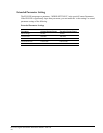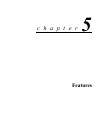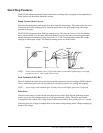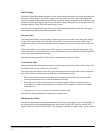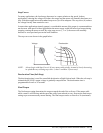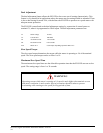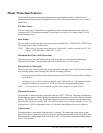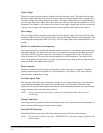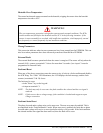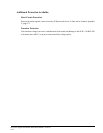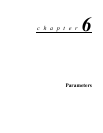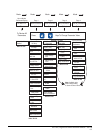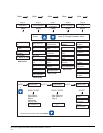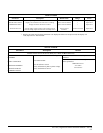
RVS-DX, Digital Soft Starter Instruction Manual—4/01/04
5-8
Undervoltage
The under voltage function becomes available only after the start signal. The starter will trip when
the main voltage drops below the preset level for a time period longer than the under voltage delay.
The under voltage trip setting ranges from 50-90%. The under voltage delay can be adjusted from 1
to 10 seconds. The under voltage fault can be auto reset. The auto reset must be enabled (see “Fault
Parameters” in Chapter 6). The starter will re-check for the under voltage fault after 60 seconds and
will auto reset as long as the run signal has been removed and the fault condition has cleared.
Overvoltage
The overvoltage function becomes operational only after the start signal. The starter will trip when
the main voltage rises above the preset level for a time period longer than the overvoltage delay. The
overvoltage trip setting ranges from 110-150%. The overvoltage delay can be adjusted from 1 to 10
seconds.
Phase Loss (and under/over frequency)
This protection feature is operational when the starter is energized. It is designed to protect the motor
from single phasing. The starter will trip when 1 or 2 phases are missing for more than one second.
The starter will also trip when frequency is less than 45 Hz or greater than 65 Hz. The phase loss
fault can be auto reset. The auto reset must be enabled (see Fault Parameters). The starter will re-
check for the phase loss fault after 60 seconds, and will auto reset as long as the run signal has been
removed and the fault condition has cleared.
Phase Sequence
The phase sequence function becomes operational as soon as the starter is energized. The phase
sequence protection must be enabled (see “Fault Parameters” in Chapter 6). The starter will trip
when the phase sequencing is wrong.
Low Slow Speed Time
This function will trip the starter if the motor operates at slow speed (forward or reverse direction)
longer than the Maximum Slow Speed Time (settable from 1 to 30 seconds). When the motor
operates at slow speed it draws higher than nominal current (depending upon the slow speed torque
setting), thus the motor and starter may overheat.
NOTE: Always operate the motor at slow speed for the minimum possible time to prevent
overheating.
Wrong Connection
The wrong connection protection indicates when the motor is not connected to the load terminals, or
there is an internal disconnection in the motor winding.
Shorted SCR Protection
The shorted SCR protection trips the starter when one or more SCRs have been shorted.
NOTE: The soft starter will also trip on the “SHORTED SCR” if the main voltage is applied to the
load terminals.



